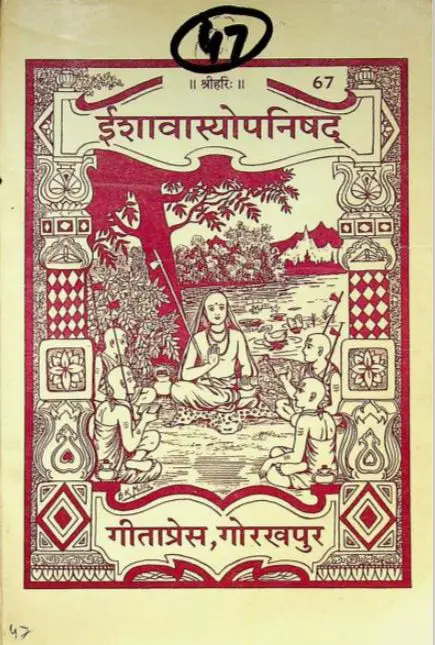Isha Upanishad is one of the shortest and most popular Upanishads
It is considered to be one of the most important and influential texts in Hinduism. It is a concise and powerful exposition of the central teachings of Vedanta, including the oneness of Brahman, the nature of the Self, and the path to liberation.
The Upanishad begins with the famous declaration, “Isha vasya idam sarvam” (All this is enveloped by the Lord). This verse establishes the fundamental principle that everything in the universe is a manifestation of Brahman, the supreme reality. The Upanishad then goes on to discuss the relationship between the individual Self (Atman) and Brahman, and how to achieve liberation from suffering.
What is Brahman as per Vedanta?
Brahman in Vedanta is the ultimate reality, the source and ground of all existence. It is described as being eternal, infinite, and unchanging. Brahman is also said to be pure consciousness and bliss.
According to Advaita Vedanta, the most influential school of Vedanta, Brahman is the only true reality. The world of phenomena, including the individual self, is an illusion, or Maya. This illusion is created by the mind, which superimposes duality on Brahman.
In order to realize Brahman, one must remove the veil of Maya. This can be done through self-inquiry or jnana yoga. When one realizes that Brahman is the only true reality, all duality disappears. This is the state of moksha or liberation.
Here are some of the key characteristics of Brahman in Vedanta:
- Sat-cit-ananda: Brahman is pure existence (sat), pure consciousness (cit), and pure bliss (ananda).
- Nirguna: Brahman is without attributes or qualities.
- Nirakara: Brahman is formless.
- Akarta: Brahman is the source of all action, but itself does not act.
- All-pervading: Brahman is present everywhere and in everything.
Brahman is often contrasted with Maya or illusion. Maya is a world of phenomena, which is impermanent and ever-changing. Brahman, on the other hand, is eternal and unchanging.
The goal of Vedanta is to realize Brahman. This is done through self-inquiry and meditation. When one realizes Brahman, one achieves liberation from the cycle of birth and death.
Here is a quote from the Upanishads, one of the main sources of Vedanta, that describes Brahman:
“That art thou.” (Tattvam asi)
This quote means that Brahman is not something separate from us. It is our own true nature.
One of the key teachings of the Isha Upanishad is that the Self is not the ego or the body-mind complex. The Self is the real and eternal essence of our being, and it is identical to Brahman. The Upanishad teaches that we can achieve liberation by realizing our true identity as the Self.
The Isha Upanishad also emphasizes the importance of action (karma). The Upanishad teaches that we should act in the world but without attachment to the fruits of our actions. We should act in a selfless and detached manner, knowing that the Self is the true doer of all actions.
The Isha Upanishad concludes with a prayer for peace and harmony. It prays that all beings may live together in harmony and that all may achieve liberation from suffering.
Here is a summary of the main teachings of the Isha Upanishad:
- Everything in the universe is a manifestation of Brahman, the supreme reality.
- The individual Self (Atman) is identical to Brahman.
- We can achieve liberation by realizing our true identity as the Self.
- We should act in the world but without attachment to the fruits of our actions.
- We should pray for peace and harmony for all beings.
The Isha Upanishad is a profound and inspiring text that can help us understand our true nature and the path to liberation. It is a timeless teaching that is relevant to people of all faiths and backgrounds.

